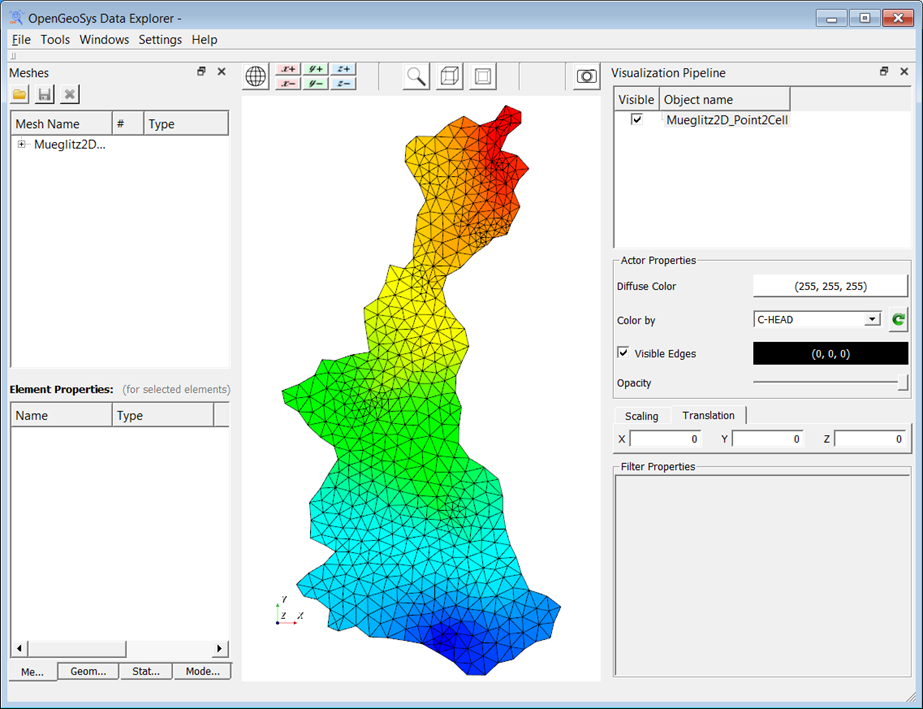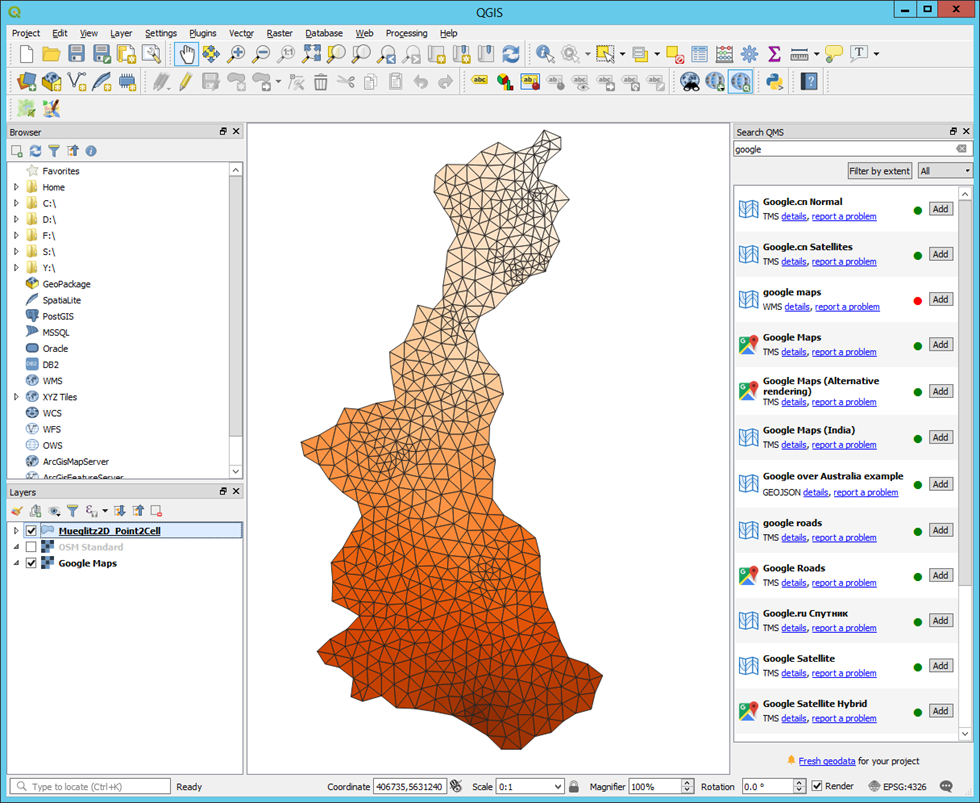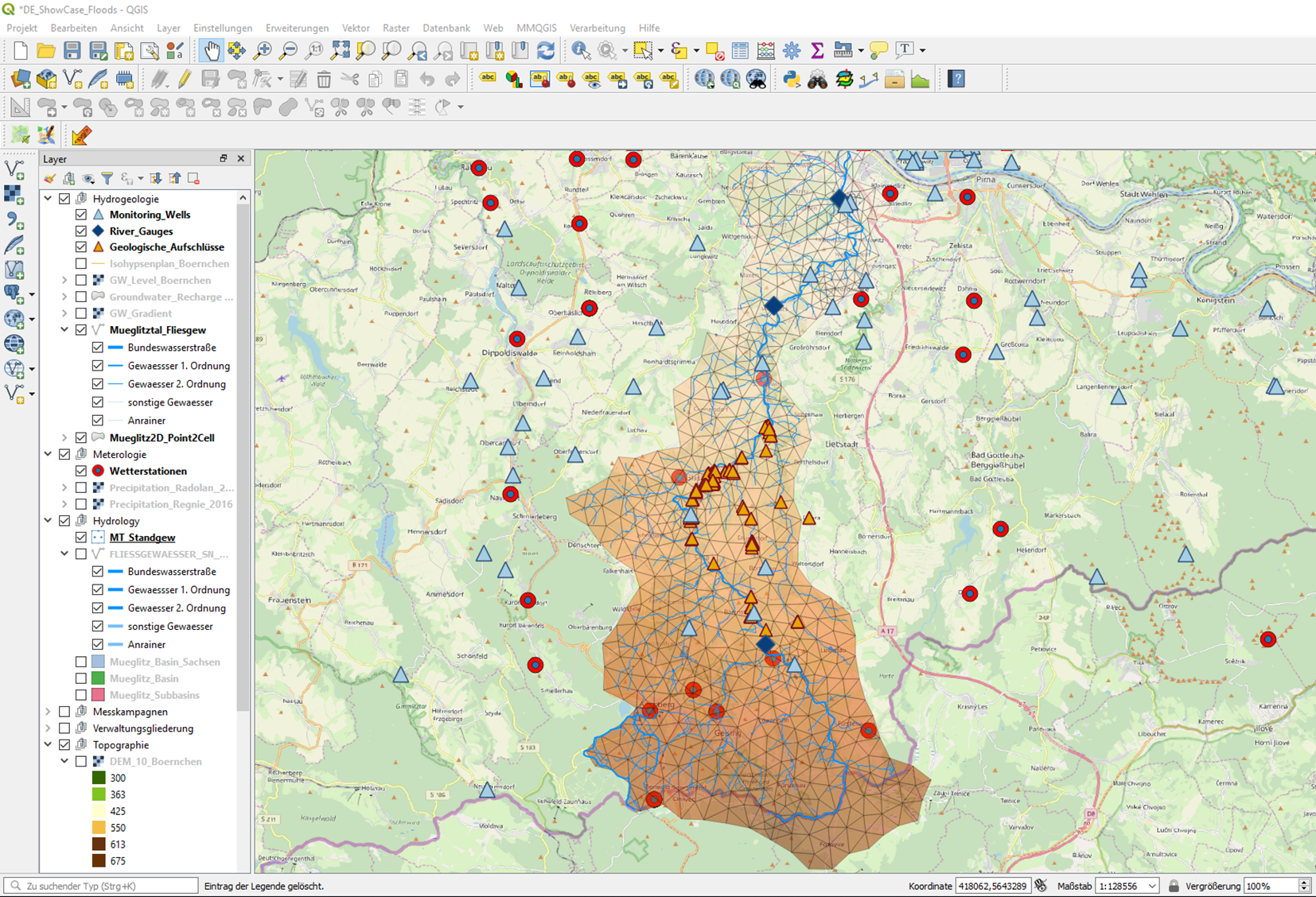Mesh2Shape
Introduction
Converts a 2D surface mesh into a Shapefile such that each element is represented by a polygon. Cell attributes are transferred onto shape polygons while point attributes are ignored.
Usage
Mesh2Shape -i <input_file.vtu> -o <output_file.shp>
Where:
-i <input_file.vtu>, --input-file <input_file.vtu>
(required) OGS mesh file (*.vtu, *.msh)
-o <output_file.shp>, --output-file <output_file.shp>
(required) Esri Shapefile (*.shp)Simple example
Input data:

Command:
Mesh2Shape -i Mueglitz2D_Point2Cell.vtu -o Mueglitz2D_Point2Cell.shp


Application
The utility allows to export meshes, and in particular simulation results, into existing GIS-projects and use the data as input for subsequent workflows.
This article was written by Karsten Rink. If you are missing something or you find an error please let us know.
Generated with Hugo 0.147.9
in CI job 576857
|
Last revision: May 14, 2025
Commit: [Log] Show number of MPI processes 30f55918
| Edit this page on